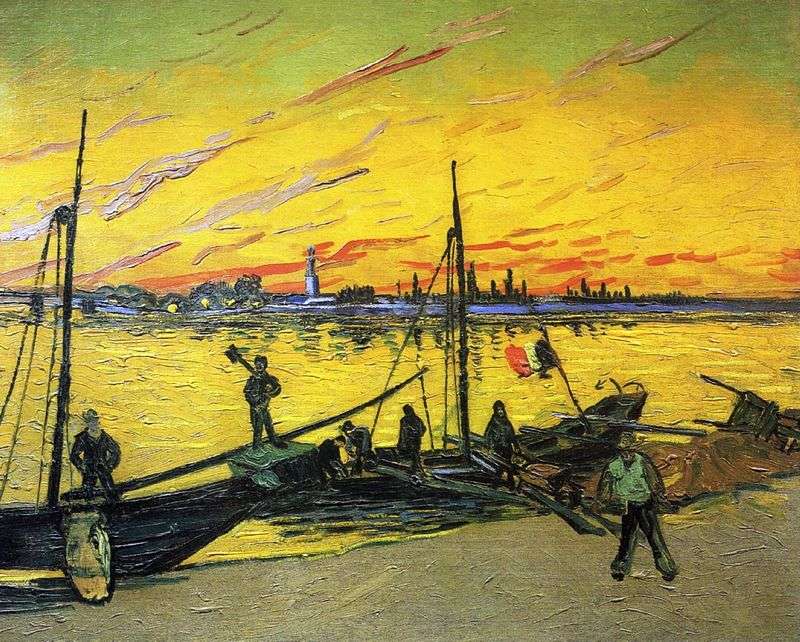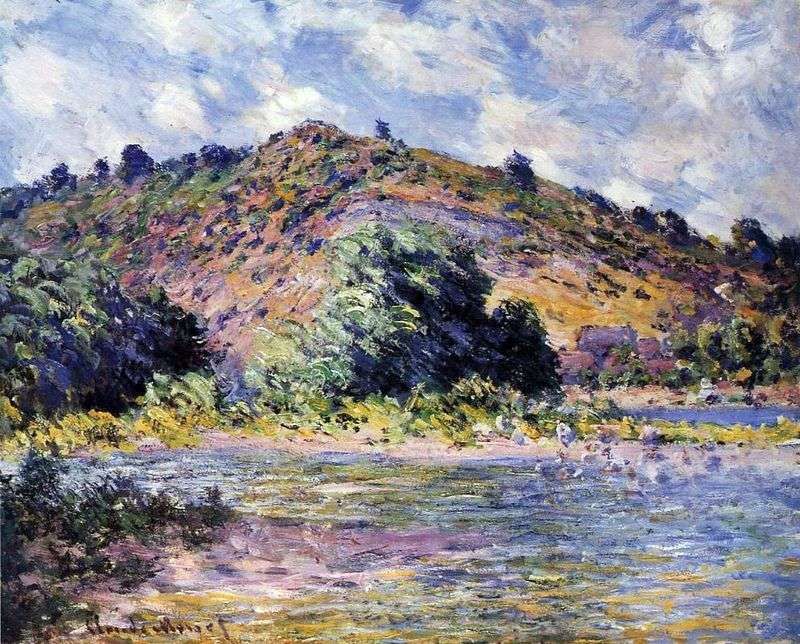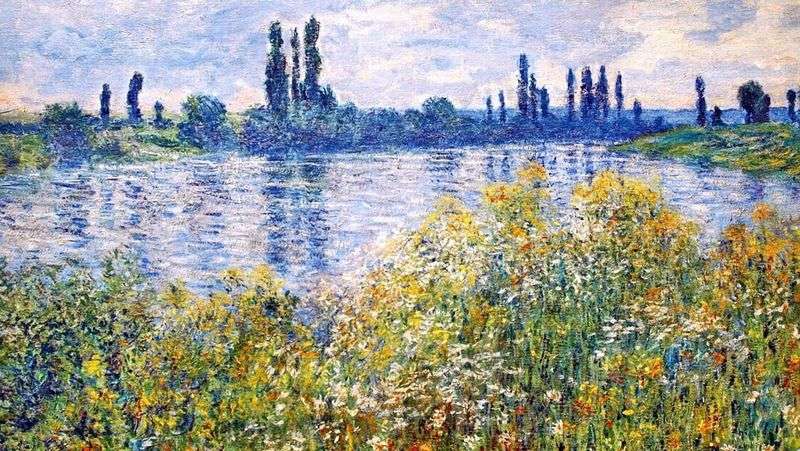
In Paris, Van Gogh paints landscapes solely from nature. The banks of the Seine attracted Impressionist artists and gave an endless array of motifs for landscape paintings. In this painting in 1887, Van Gogh draws a river in a remote from the city vanity terrain.
To emphasize the breadth of the unoccupied space, the artist makes the composition open, only to the left slightly limiting it to the leaves of the tree. The viewer has a wide view of the opposite shore, covered with forest, and the water surface of the river. At first glance the landscape seems deserted, only a lonely floating rowboat with a human figure breaks this impression.
The painting was painted from nature, and the artist used colors that are as close to natural as possible. He showed the evening time when the sun begins to move slowly towards the horizon, painting the edge of the sky in warm tones. The far bank of the river gradually darkens, and the color of the water becomes thicker and colder. With the help of wide free smears, Van Gogh conveys a slight ripple on the surface of the river.
The naturalness and ease of execution makes this picture very easy to perceive. The author managed to reliably convey the atmosphere of a summer evening on the bank of the river, filled with the sounds of the forest, the soft splashing of waves and the coolness that flows from the water.
 Seine Coast in Pont de Clichy in spring by Vincent Van Gogh
Seine Coast in Pont de Clichy in spring by Vincent Van Gogh Seine with Pontoon Bridge Grand Jet by Vincent Van Gogh
Seine with Pontoon Bridge Grand Jet by Vincent Van Gogh Seine embankment by Vincent Van Gogh
Seine embankment by Vincent Van Gogh Bridges across the Seine by Vincent van Gogh
Bridges across the Seine by Vincent van Gogh Bridge over the Seine in Asnieres by Vincent Van Gogh
Bridge over the Seine in Asnieres by Vincent Van Gogh Coal barges by Vincent van Gogh
Coal barges by Vincent van Gogh The banks of the Seine, Port Ville by Claude Monet
The banks of the Seine, Port Ville by Claude Monet Flowers on the banks of the Seine by Claude Monet
Flowers on the banks of the Seine by Claude Monet